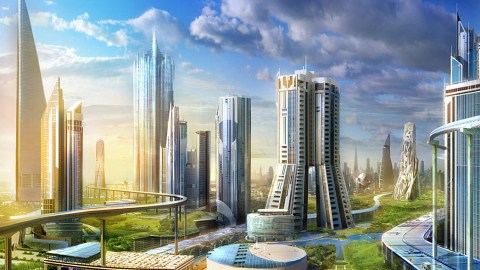The Science of Cities: Is Urbanization Sustainable?

“Rapid urbanization is the fastest, most intense social phenomenon that ever happened to humankind, perhaps to biology on Earth. I think we can now start to understand in new and better ways why this is happening everywhere and ultimately what it means for our species and for our planet.” — Luis Bettencourt, Sante Fe Institute
It was only a century ago when 2 for every 10 people on the planet resided in a city. Before that time it was even less. Yet today more than half of the world’s population lives in a city, and by mid-century it’s projected over 70% of all humans (with our growing population taken into account (expected to reach a homeostasis of around 10 billion people)) will be stationed in some sort of metropolitan municipality. This explosion of urban dwellers is a game-changer, and it’s important to understand why, and what else needs to happen for this shift to transpire effectively.
And this is precisely what some researchers at the Sante Fe Institute have been working on. SFI is like CERN for complexity research, a highly selective think tank where physicists, biologists, mathematicians and the like congregate in attempts to decipher how the world works. Two researchers in particular, Geoffery West and Luis Bettencourt, have been collaborating on something referred to as a “science of cities”. Their overhead reads: Cities, Scaling and Sustainability, and the goal is to create a “Grand Unified Theory of Sustainability” based on, amongst other things, empirical evidence they’ve collected that suggest a sameness in the DNA of a city’s makeup.
To these scientists cities are like super-organisms, and can be broken down and analyzed just like all other species in the biological kingdom. Geoffery West speaking in an EDGE.org interview postulates,
“Is New York just a scaled up San Francisco, which is a scaled up Santa Fe? Superficially, that seems unlikely because they look so different…On the other hand, a whale doesn’t look much like a giraffe. But in fact, they’re scaled versions of one another, at this kind of cross-grained 85, 90 percent level.”
West and colleagues tracking these dynamics of urban centers around the world have discerned therein lies laws containing a “universality” to them. For instance, “doubling the size of a city systematically increases income, wealth, number of patents, number of colleges, number of creative people, number of police, amount of waste… all by approximately 15%.” Additionally, this doubling effect “saves approximately 15% on all infrastructures.” These results have been observed in hundreds of cities and counting, all around the world.
Building on this idea in a recent paper in Science, West’s colleague Luis Bettencourt adds another dimension to the analogy, explaining:
“A city is first and foremost a social reactor. It works like a star, attracting people and accelerating social interaction and social outputs in a way that is analogous to how stars compress matter and burn brighter and faster the bigger they are.”
It’s as if the magnetic pull of people towards the city is built into nature, just like the gravitational pull of matter towards the star. A scintillating concept – backed by data – hinting towards a fractal dimensionality of life in the cosmos; suggesting a corollary between the prevalence of urbanization on our planet with the evolution of stars in our galaxy. But the question then becomes… how do we prevent our city-stars from going supernova on us?
And this is where West and Bettencourt’s ‘Grand Unified Theory of Sustainability’ comes into play. Since we can measure and understand the composition of a city, they believe we can formulate an all-encompassing blueprint for sustaining urbanization, and in doing so, life on the planet.
Time is certainly of the essence, however. Data shows that “the concentration of economic and cultural activities in larger cities lead to an acceleration of time — and greater rates of innovation.” Thus, alongside the expedient push towards the city is a clock ticking faster and faster. It is a velocity flirting with civilization’s terminal conclusion. In fact, the British ‘Astronomer Royal’ Sir Martin Rees goes so far as to call the 21st Century mankind’s “Final Hour” — estimating humanity’s probability of extinction before 2100 to be 50%… a mere coin flip!
So as the city becomes the bedrock of human activity on the planet, it may be our last shot at getting this sustainability thing right. A science of cities can provide the clarity needed for swift and accurate decision making. It’s a transformation that fuses at the intersection of technology and ecology. Where big data illuminates problems and innovators design solutions. Where urban planners collaborate with biologists, and collectively we champion the holistic values essential for modernity to flourish. Armed with a universal perspective of the city, the old maxim “think global, act local”really begins to hold some weight. Indeed, everything may depend on it.





